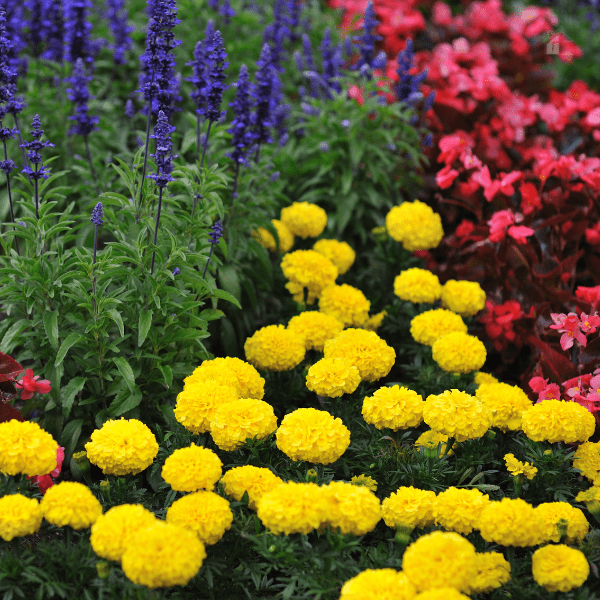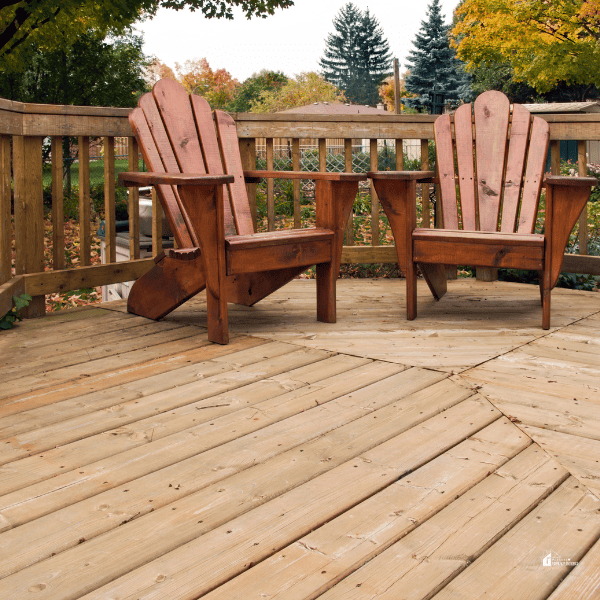How to Care for New Sod: A Beginner’s Guide
This post may contain affiliate links which might earn us money. Please read my Disclosure and Privacy policies hereIf you are a beginner, then this post is for you! If you have just put in new sod on your lawn or garden and want to make sure it stays healthy, this guide will help.
New sod is the perfect way to give your lawn a makeover! But, you may be wondering what type of new sod to buy and how long it will take for your grass to grow. Let's learn all we need to know about caring for sod, shall we?
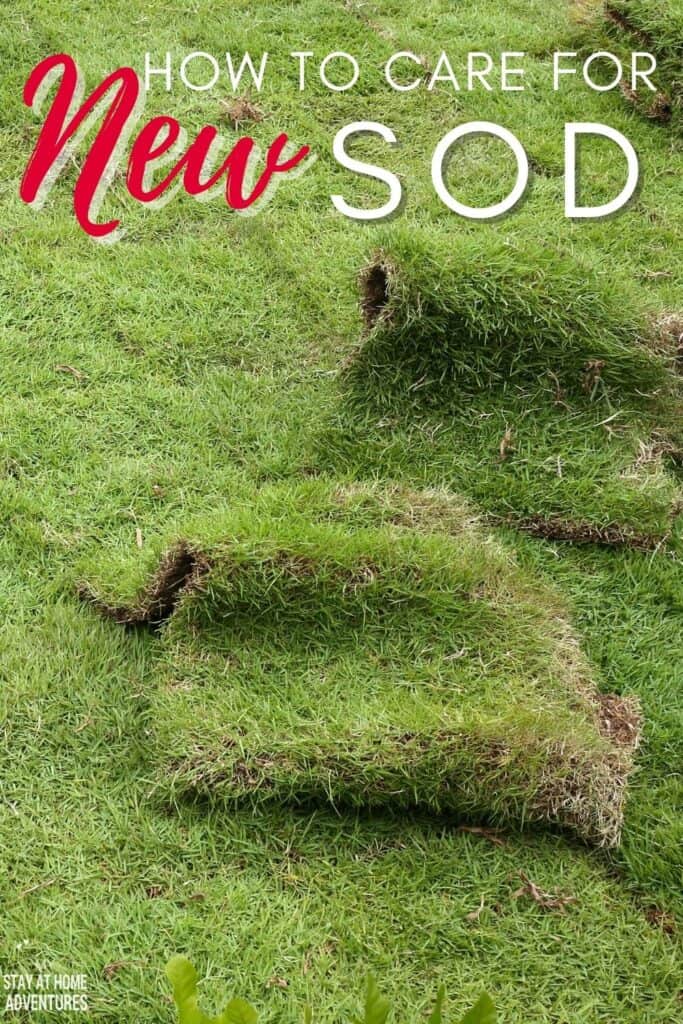
What is sod?
First, let's start with the basic question, what is sod? Sod is a product that has been cut from the ground and packaged with its roots still intact. Sod is a type of turf that has been cut into large rectangular pieces. This turf can be installed by laying it over an area, then using a lawn roller to compress the new sod and remove air pockets.
What are the top 3 sods to use in your home garden?
If you are considering using sod in your garden, it's important to know what to look for when purchasing. The three most popular types of sods available include sprigs, plugs, and sheets. These different options provide various benefits that might be better suited for the type of space or gardening style you have.
Can you overwater new sod?
New sod needs a lot of care when it comes to getting established. Putting too much water on the sod can cause problems and reduce the time until the new grass takes root.
A common mistake many new sod owners make is overwatering their plants. Sod is more susceptible to insect, fungus, and disease damage if it gets too much water.
How do you know you are overwatering your new sod?
Some of the signs that you are overwatering your sod include an increase in weeds, mud at the base of the plant, and discoloration or wilting on top.
Another sign is if there's water standing around your new grass plants for more than two hours after watering.
If you see signs of overwatering your sod, you need to cut back on the amount of watering your new grass gets. You can skip one day or a day and a half of watering to allow the soil underneath to absorb the water. The soil should be moist and not soggy.
Some people find it helpful to use a moisture meter on their soil before watering. You can buy these at your local hardware store for less than $20, and they allow you to measure the amount of water in your soil by inserting one end into the ground near where the sod is planted and reading off the number on the other end.
If the number is under 30, then your soil needs more water, and if it's over 40 or 50, you should stop watering because too much moisture can cause root rot in new sod.
You will also want to water less when temperatures are high outside as well. Hot weather dries out the ground very quickly, so keep that in mind. Try watering early in the morning if temperatures are going to be high that day.
If you overwater your sod, the roots will rot, and the grass will die.
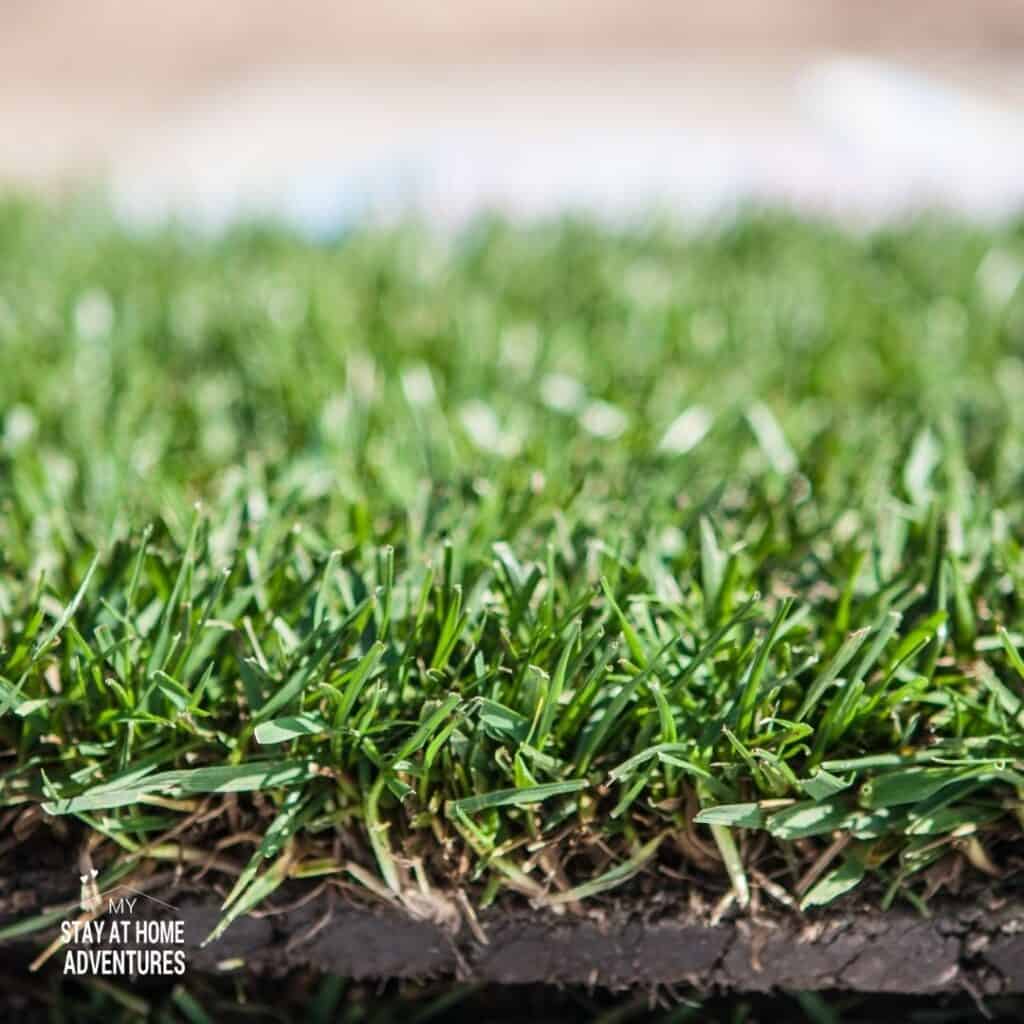
How do you check for rotting roots on your new sod?
After laying new sod, look at the roots during the first week of laying it. They will indicate if the sod is alive or dead. If your new sod roots appear to be rotting, you may have been overwatering or watering more frequently than needed.
New sod requires a considerable amount of water to keep it healthy, so plan on watering more than once a day to prevent the soil from drying but always check the roots to prevent rotting roots.
Another sign that you are overwatering your sod is by measuring the depth of the moisture. Soil moisture levels are a good indicator of whether you need to water your new sod.
Once you set the new sod, and until the roots grow and are set, continue to water it until the top one inch of the soil underneath is moisten.
After the new sod has taken root, decrease how often you water it by watering less frequently, but taking care always to wet 6 inches of soil.
What tools can I use to check soil moisture in new sod?
Gauge the depth of moisture by using a long screwdriver. Insert it into the ground at various distances away from your sod, and when you feel moist soil, that is how deep to water.
What to do about sod not rooting?
If you're planting new sod, it may take a while for the roots to grow and set. It can be frustrating if your plants are wilting after only one or two days of watering. The roots of your new lawn should begin to knit with the underlying soil after one to three weeks.
If the sod is not establishing itself in the soil, roll up the affected area and with a trowel or shovel fluff up some space. Sod, once laid on the ground, should be tightened up with your hands and then stomped down with your feet.
What to do if sod does not take?
If your sod is still wilting after several days, it may be that the roots did not take. In this case, you will need to contact a professional landscaper or ask someone with experience in laying new lawns for advice on what to do next.
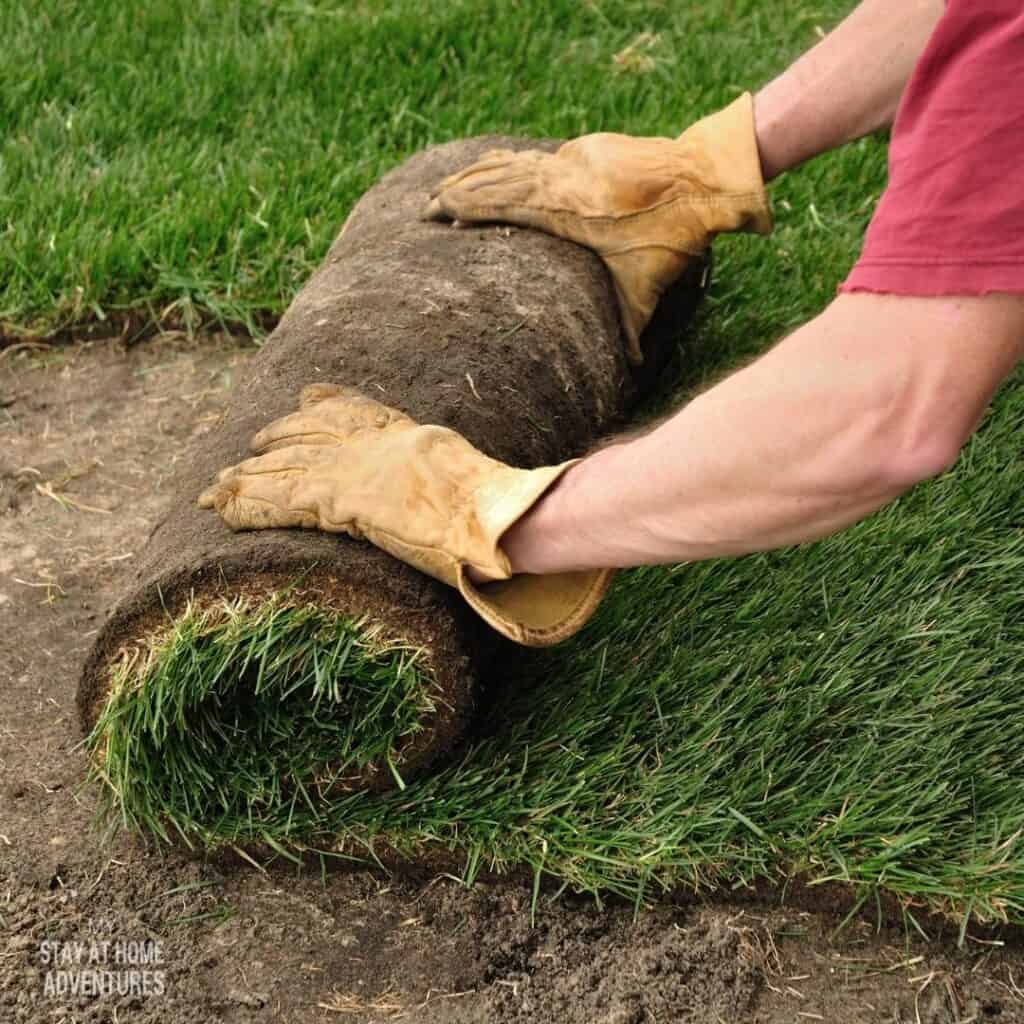
How much should I water after laying sod?
After you lay your sod, you should water it every day for three days. After those first three days, you should continue to water your sod every other day until it is at least two weeks old.
How to fertilize new sod
We covered watering your new sod, and now it is time to talk about fertilizing your new sod. Fertilizing your new sod after it has been laid is a good idea.
Begin by feeding new sod 3-4 times per growing season to ensure that your lawn remains healthy. It is best to use a slow-release of nitrogen, but most importantly, on the spring and fall applications.
What's the best fertilizer for new sod?
Your next question is what is the best fertilizer for new sod.
The best fertilizer is slow-release nitrogen, which should be applied to your newly installed lawn in the spring and fall. Every other day until it is at least two weeks old.
How long should you wait to fertilize new sod?
Wait until the sod is at least six weeks old to fertilize. Apply fertilizer as recommended from the results of a soil test or use slow-release, granular fertilizer.
If your sod did not get rooted securely, wait 4 weeks before fertilizing it. When the new growth appears or when the roots are secure, then fertilize it.
Whether the sod was installed in winter or when it was dormant, fertilizing should be left until spring.
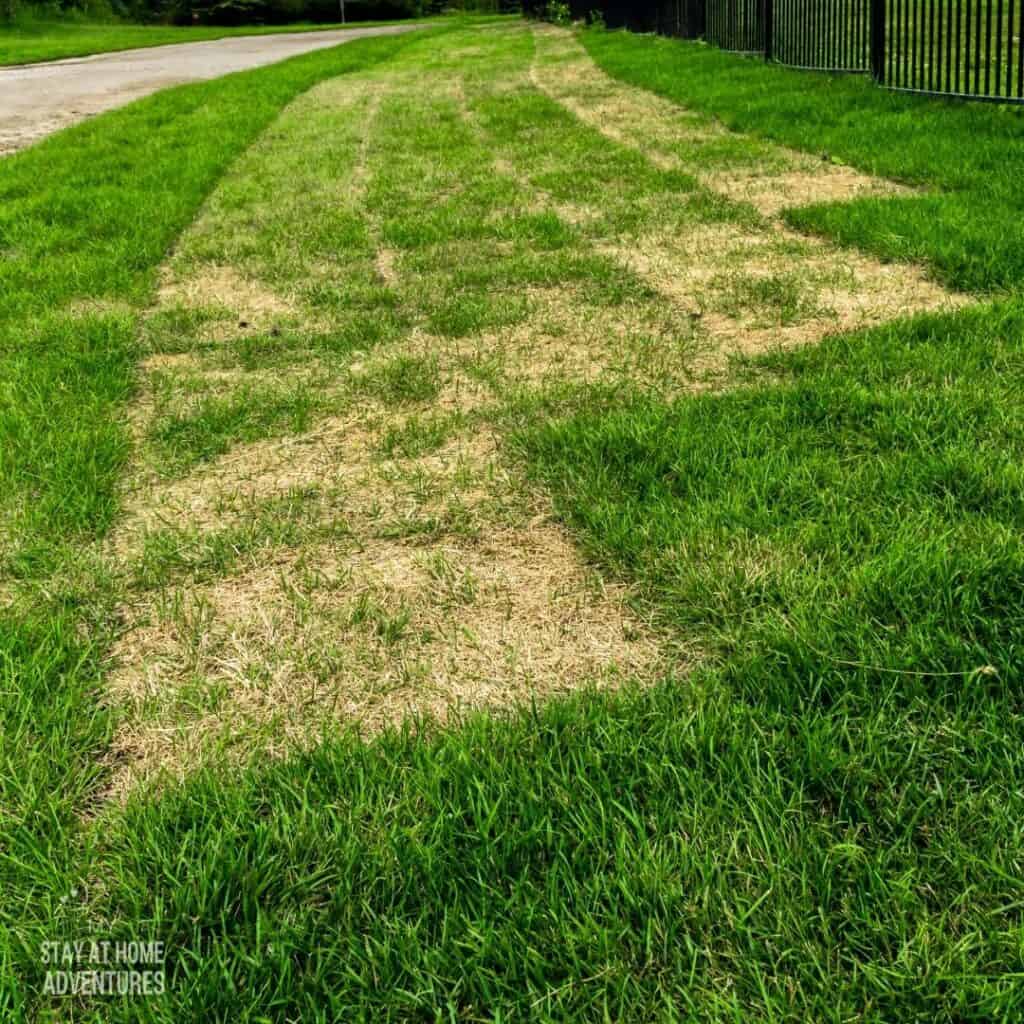
Weed issues in new sod
Weeds can be a challenge in new sod installations. They are often more easily seen if the sod is still thin and has not yet grown out or when there is an area of bare ground where weeds were pulled up with the old lawn.
Newly laid sod is vulnerable to weed killers, so it will take 3 weeks to establish before using any. When caring for fresh sod, it is best not to apply weed killers until the turf has at least grown 3 weeks—spot-treat weeds by applying post-emergent weedkillers.
How do I get rid of weeds in new sod?
The best way to deal with weeds in new sod is to pull them up by hand. If there is an area of bare ground, seed it with a weed-free mix and cover the seed with mulch or soil from another part of the yard.
So you’ve decided to take the plunge and install new sod in your yard. Congratulations! It can be exciting, but it also requires a little bit of work on your part before things get rolling. We hope this post has helped with some tips for taking care of that new green space so that soon enough, you have a lush lawn full of life and beauty.
One last thing we want to leave you with is our advice about watering – don't overdo it or underdo it!

